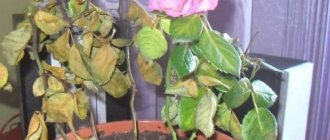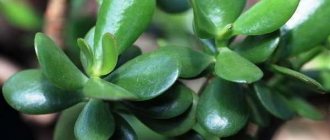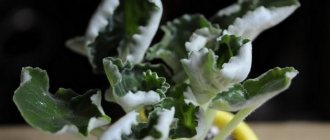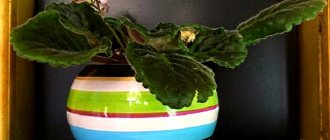If you like to grow home flowers, then at least once in your life you have probably encountered a problem when a plant begins to wither and dry out. It is very difficult to revive a dying violet, but if it has not yet died, then there is a chance of salvation. How can you help her? In this article you will learn about ways to save drying violets.
Natural aging
In violets, with satisfactory maintenance, the plates function normally for about a year. Then, starting from the bottom ones, they gradually age, sequentially:
- change color;
- turgor worsens;
- yellow areas appear with signs of drying out or rotting;
- the plates wither and die.
If Saintpaulia is replanted at least once a year, the leaves will not wither due to old age - during the operation, the bottom row of plates is usually removed.
Why does violet disappear at home?
When growing Saintpaulia, everyone can make mistakes. Sometimes there may be problems that do not depend on compliance with all the rules of care, location and growing conditions of Saintpaulia.
If the violet disappears,
the reasons for this may be the following:
- hypothermia or temperature changes;
- waterlogging or lack of moisture;
- sunburn;
- rot;
- parasites;
- poor soil;
- infections.
Every problem has a cure; if you don’t manage it in time, you have to resuscitate the flower.
Improper watering
If the violet has soft leaves, first of all, the owners should reconsider watering. Inexperienced gardeners often think that vegetative organs can only wither due to lack of moisture; they give the bushes more water, as a result the roots begin to rot and the Saintpaulia dies.
The worst thing is that overwatering is really easy to confuse with overdrying:
- leaves lose turgor;
- wither;
- in advanced cases, they hang down.
The exact cause can only be determined by the state of the earthen coma. It needs to be taken out of the pot and examined.
Overflow
Droopy violet leaves often indicate overwatering. This is accompanied by:
- soaking and souring of the substrate;
- deterioration of aeration;
- rotting of the root system;
- cessation of nutrition and, oddly enough, absorption of water - the decaying sucking shoots cease to function.
As a result, the underground part may die completely. Treatment:
- in mild cases - drying the earthen coma;
- in case of strong overflow - transplant into a smaller pot and clean out the rotting sucking shoots;
- neglected situation - pruning and rooting of the top.
Sometimes the owners only have time to take healthy leaves for propagation. If the plate, and not just the petiole, has become soft and began to wither, it is too late to do this.
It is very easy to overwater violets in a large pot. The correct ratio of the diameter of the upper hole and the socket is 1:3.
Overdrying
The above-ground part of a drying bush behaves as if it were overflowing. If Saintpaulia constantly suffers from a lack of moisture or periods of drought alternate with normal or excessive watering, violet:
- develops slowly;
- the corollas do not correspond to the varietal description - they become pale and small;
- the plates turn yellow, and the change in color is not associated with their age.
Substrate:
- moves away from the pot, as a result, the moisture does not saturate the soil, but is immediately poured into the pan;
- the soil hardens, depending on its structure, turns into many dry lumps or a solid monolith;
- the root dries out and dies.
Treatment: you need to saturate the substrate with moisture using the immersion method, then inspect the underground part. Sometimes it is enough to cover the flower with transparent cellophane, and the turgor will be restored naturally. But if sluggish vegetative organs do not regain their elasticity within a day, they will have to be cut off.
Temporary overdrying is less dangerous for violets than overwatering.
Water has entered the center of the outlet
The leaves will certainly begin to wither when the owners are in a hurry, lazy, or do not consider it necessary to lift them during overhead watering. The liquid gets onto the base of the petioles or into the center of the rosette; due to the tight fit and pubescent surface of the vegetative organs, it evaporates slowly, and rotting begins.
Getting the violet wet at low temperatures or evening watering is especially dangerous.
What to do?
If you find limp lower leaves on a plant, try to find the cause. If the room is hot and the soil in the pot is dry, then abundant watering combined with sprinkling can help the violet. At home, the flower is placed in a basin and watered from a shower or watering can with lukewarm water, washing all the leaves. The pot is left in a bowl of water for about 30 minutes.
In order for Saintpaulia to finally get stronger, you only need to keep the soil moist, but if the plant suffers from wilting even after this, the cause can be determined by the signs accompanying undesirable conditions (pests, waterlogging or low temperature). Once the cause is discovered, proceed as follows:
- When the soil is waterlogged and too dense, the root system suffers greatly. In this case, it is recommended to remove the flower from the container, wash off the remaining soil from the roots and inspect them. Having found traces of rot, cut off the damaged parts and dust the sections with activated carbon powder. Transplant the bush into new soil in a small container (even a large Saintpaulia requires a container of about 1 liter).
- If the rotting process has taken over the stem, remove the lower flaccid leaves and cut the rosette down to intact tissue. Healthy pulp has a light, slightly greenish color. It is easy to root the rosette again by deepening the cut into the soil by 2-3 cm.
- If the wilting is caused by pests or diseases and proper care cannot help, the only thing to do if the violet wilts is to purchase a repellent for insects, fungi or infections at the flower shop. Spray the plant with the composition and keep it in a mini-greenhouse from the bag for 12-24 hours.
It is advisable to fertilize with mixtures specially designed for flowering plants, where all elements are balanced. Subject to simple conditions and dosages of the drug, violet will not suffer from an excess or deficiency of minerals.
Other care errors
Saintpaulia withers when the owners violate the conditions of detention:
- The temperature drops below 15° C or rises above 30-32° C. If the deviation from the norm is short-term, insignificant, turgor will return on its own. If the temperature is violated for a long time, the violet may die.
- The soil is damaged or was not initially suitable for growing the crop. Need an urgent transplant.
- Watering with cold water.
- Chemical burn of the root after fertilizing with dry soil or too concentrated fertilizer.
- Low air humidity. For violets, the acceptable minimum is 50%.
- There hasn't been a transplant for a long time. The operation should be performed at least once a year, preferably every 6-9 months.
- Hypothermia of the root in winter. Violets often wither after watering if they stand on a cold windowsill. It is recommended to build a protective screen, or at least place a piece of foam under the pot.
- Saintpaulia wilts when watered regularly with hard water.
- Drafts. The flower cannot be placed in front of a working air conditioner; it must be covered with newspaper or protected in another way when ventilating.
Dry the earthen lump
You can determine how serious the consequences of overwatering are by completely removing the flower from the pot:
- Place your palm on the soil, gently squeezing the violet stem and base between your fingers.
- Carefully turn the container upside down and, shaking the pot slightly, remove the soil with the seedling.
If you were unable to get the flower the first time, return the container to its original position and separate the soil from the walls using a long knife, then turn the pot over again and try to remove the plant.
After completing the procedure, inspect the extracted earthen lump: if only the smell of dampness emanates from the substrate, without any admixture of the “aroma” of rot or decomposition, to save the flooded violet it will be enough to thoroughly dry the soil.
To do this, place the soil with seedlings on several layers of toilet paper, cotton cloth or paper towel. As the bedding becomes wet, replace it with new material. Drying the soil must be done within 24 hours, after which the violet can be returned to its original container.
Violet leaves wither after transplanting
This sometimes happens even among experienced gardeners, especially if the operation was accompanied by stripping of the roots. It is recommended to cover the injured plant with a transparent cap - the violet will recover rather than fight for life, and turgor will return to the leaves faster.
Saintpaulia may wither after transplantation for other reasons:
- The timing was wrong for the operation. The crop can be moved to a new pot regardless of the season, but it is better to do this in spring or autumn. In summer it is too hot, although violet can withstand temperatures up to 30° C well, it is better that the first weeks after transplantation should not exceed 25° C. In winter, on the contrary, it is cold. Even at 18°C, proprietary varieties with damaged roots suffer; they need at least 20°C.
- The violet can be watered with water at room temperature. But after transplantation it is better if it is 5°C higher. Some gardeners generally advise raising the degree to 30-35. Cold water often causes rotting of injured roots.
- The same thing often happens with abundant watering immediately after transplanting. This does not mean that the violet should be left dry for several days - this way the leaves will definitely begin to wither. The substrate should be slightly moistened so that it sticks to the roots and fills the air pockets.
- Even when transshipping a violet, the underground part is injured. This is fraught with infection in the wounds, especially when making the substrate yourself. It is recommended to water the bushes with Fitosporin solution 2-3 days after moving them to another pot.
Stampings - industrial varieties tolerate replanting more easily than designer violets.
Rinse in potassium permanganate
After removing the decomposed areas, the remaining substrate and violet roots must be disinfected:
- Dilute a small amount of potassium permanganate in water so that the liquid turns light pink.
- Thoroughly rinse the roots of the plant with potassium permanganate. Let them dry a little and sprinkle them with a mixture of pre-washed, oven-hardened river sand and vermiculite, taken in equal parts.
- Rinse the substrate with the solution, place it on paper or cloth to drain excess moisture.
Diseases and pests
For these reasons, Saintpaulia rarely withers. The culture has excellent immunity, attracts little insects, and pathogens do not colonize the collection for years.
But sometimes they can get on plants:
- from clothes or dirty hands of owners, hair from pets walking on the street;
- after transplantation into a substrate containing contaminated garden soil;
- bring into the house with new plants, fruits, a bouquet of flowers, especially wild ones.
Pests of Saintpaulia
When attacked by insects or mites, the pests will first multiply so that they will swarm in the pot, on the vegetative organs. And only then the violets will begin to fade. Usually owners take action earlier.
The following require special attention and treatment with appropriate insecticides:
- cyclamen, spider, flat mites;
- white podurs (ground fleas);
- greenhouse aphids;
- mealybugs;
- thrips;
- nematodes;
- whiteflies.
Sciarides (fungus gnats) irritate owners more than they harm indoor violets. But if you don’t pay attention to them for a long time, the roots will begin to eat away and the leaves will begin to wither.
Charcoal around the perimeter of the pot
Place the disinfected plant in a pot, add a mixture of dried and potassium permanganate-treated soil, sand, vermiculite, taken in a ratio of 2:1:1, respectively.
Along the inner walls, around the circumference of the planting container, bury 5-7 pieces of charcoal into the substrate. This material will absorb excess water and some mineral salts when watering the plant, and as the soil dries, release the moisture back into the ground. In addition, charcoal is a wonderful antiseptic that can suppress the growth and reproduction of putrefactive bacteria.
Watering the violet too often or too much is a possible cause of yellowing, changes in the structure of the leaves, and rotting of the violet. Drying the soil, removing rotten tissue, disinfecting the roots, and placing charcoal in a pot with the plant will help save a flower that has suffered from a “flood.”
Causes of wilting and death of Saintpaulias in the apartment
The main factors leading to the death of a flower consist of errors made in care, diagnosis or treatment . If we talk about mistakes that can be made in indoor conditions, the main ones are the following three.
Conditions of detention
Improper care is the most common factor leading to disease and death of violets.
Some gardeners are careless when choosing soil and plant their Saintpaulias in an unsuitable substrate. The consequence of such a decision can be root disease, and when the problem is started, rotting begins.
It is very important to choose the right soil for violets.
Hypothermia and freezing
The most dangerous periods for this problem to occur are spring and autumn; under certain conditions, this can happen in winter:
- spring: when the heating is turned off, the temperature in the house may drop sharply, pots located on the windowsills may freeze from the window, especially if the leaves touch it;
- Even if the heating has been turned off for a long time and the temperature is suitable, there is a risk of spring temperature changes if the cold spell for a long time leads to problems.
Even a short-term drop in temperature can harm the plant , especially if it is accompanied by an increase in humidity. In such conditions, fungus or rot can form and quickly develop.
Solar influence
Violets and sunlight are one of the stumbling blocks for beginning gardeners. On the one hand, violets need a lot of bright lighting , and on the other hand, they do not like direct sunlight , as they quickly get burned and this leads to the death of the plant.
You should avoid placing flowerpots on southern windows , and if there are no other options, then they need to be shaded.
There is also a risk that Saintpaulia will get sunburn even on western or eastern windows. This is possible in summer, when the sun is active, or in winter, if the windows are on the first floor and there is a lot of snow outside.
Use of succinic acid
Succinic acid in floriculture is used for feeding plants and their rehabilitation after illnesses. for violets in the process of resuscitation.
Succinic acid is used to reanimate violets.
Succinic acid stimulates the formation of new roots, improvement of the condition of the leaves, and general improvement of the flower . Succinic acid is diluted in water according to the manufacturer’s instructions and watered or simply rooted the required part in this solution.










